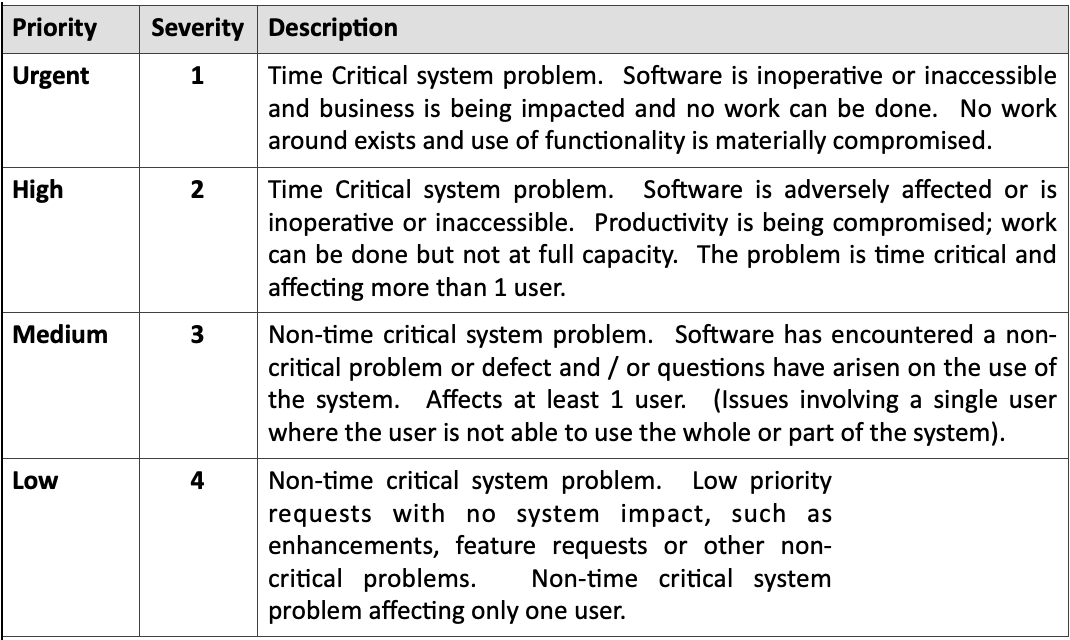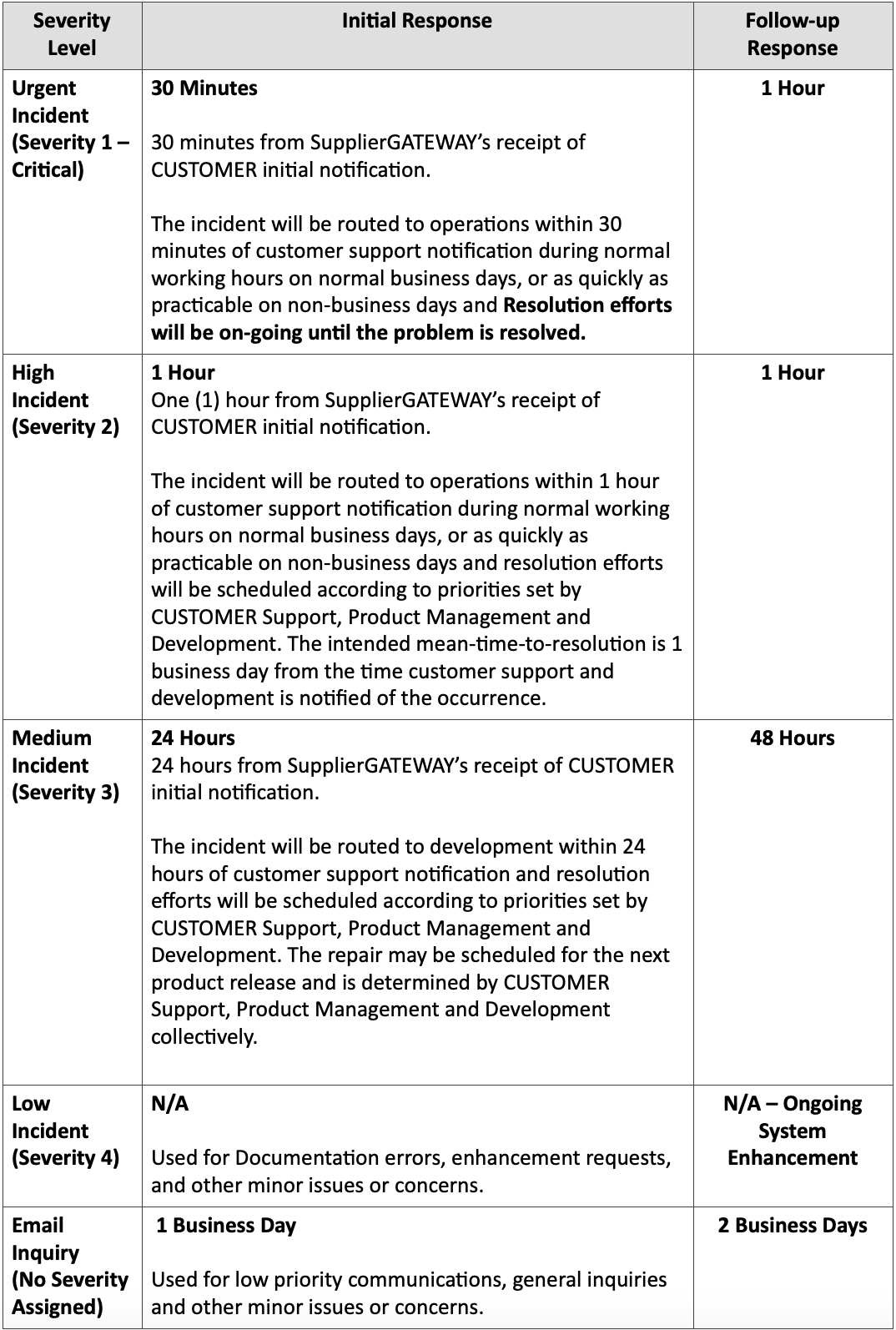The information provided herein is subject to the provisions of any Non Disclosure Agreements between CUSTOMER and SupplierGateway and the SupplierGateway Terms and Conditions of Use.
System Availability.
SupplierGateway will provide the software in a competent, workmanlike, and timely manner to provide customers with 99.9% System Availability subject to the exclusions that follow. “System Availability” is defined as
(Actual Uptime x 100) / Scheduled Uptime
“Actual Uptime” means, during a given time period, all time at which the system is accessible for use by CUSTOMER (referred to herein as “CUSTOMER”). “Scheduled Uptime” means, during a given time period, all possible time, minus Scheduled Downtime and Excused Downtime. “Scheduled Downtime” means regularly scheduled downtime for maintenance. “Excused Downtime” is downtime caused by elements, software, hardware, Internet connections, or personnel outside of the control of SupplierGateway, including downtime caused by Force Majeure.
Scheduled Maintenance.
The estimated downtime for maintenance / upgrades will be no more than 8 hours a month and will typically occur between 10 PM and 6 AM EST. Written notification of scheduled maintenance will be provided at least 7 days in advance when practicable. Schedule notification of maintenance downtime will be sent via email to designated technical contacts. There may be circumstances beyond the control of CUSTOMER or SupplierGateway that require either downtime outside of the 10 PM to 6 AM window or shorter notification.
Unscheduled Maintenance.
To the greatest extent practicable, SupplierGateway will conduct unscheduled maintenance activities in such a manner as to avoid interruption of service. When required, unscheduled maintenance will typically be conducted between the hours of 10PM and 6AM EST
End User (Help Desk) & Technical Support Request Tracking.
Support requests may be made only by designated contacts designated by CUSTOMER. CUSTOMER contacts will use commercially reasonable efforts to provide all information that SupplierGateway reasonably requests about each Support Incident. SupplierGateway will maintain a record of all Support Requests and SupplierGateway’s efforts to resolve problems and these records will be made fully available to CUSTOMER within 5 business days of requesting such information. In addition SupplierGateway will provide CUSTOMER contact with a unique ticket number for each Support Request. Technical Support Requests are required to be reported through the same channels assigned to End User Support. Priority levels for each problem will be determined in accordance with the following:
Severity

Escalation

Availability SLA Calculation
The SLA calculation will be performed on an annual basis using calendar month data. If the SLA as calculated below is less than the 99.95% level, a service credit will be provided as Customer’s sole and exclusive remedy for SupplierGateway’s failure to achieve the Availability SLA. The service credit may be applied as an offset against charges incurred by Customer for Contractor services and shall under no circumstances exceed the total amounts paid by Customer as annual service fees for service contracted with Contractor. The service credit will be equal to 5 dollars times the difference between the actual downtime and the theoretical downtime limit expressed in hours. The theoretical downtime limit will be calculated as 0.1% of the available time after the deduction of scheduled downtime.
The calculation is shown as follows:
Theoretical SLA Limit = 0.1 * (Available Time – Scheduled Downtime)
If Actual Downtime < or = Theoretical SLA Limit,
No service credit will be provided
If Actual Downtime > Theoretical SLA Limit,
Service Credit = $5 * (Actual Downtime – Theoretical SLA Limit)
The two examples below illustrate the SLA calculation.
Example 1
Available Time = 365 * 24 = 8760 hours
Scheduled Downtime = 96 hours
Non Scheduled Downtime Limit = 0.1 * (8760 hours – 96 hours) = 8.66 hours
Actual Downtime = 60 Hours
No Service Credit
Example 2
Available Time = 365 * 24 = 8760 hours
Scheduled Downtime = 96 hours
Non Scheduled Downtime Limit = 0.1 * (8760 hours – 96 hours) = 8.66 hours
Actual Downtime = 160 Hours
Service Credit = $5 * (160 hours – 96 hours – 8.66 hours) = $276.70
























